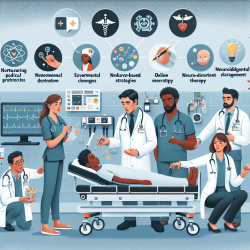Introduction
In the fast-paced environment of emergency departments (EDs), managing pediatric acute agitation poses a significant challenge. The recent research article "Strategies for optimal management of pediatric acute agitation in emergency settings" by Saidinejad et al. provides a comprehensive guide to improving outcomes for agitated youth. By focusing on evidence-based strategies such as environmental modifications, verbal de-escalation, and personalized care plans, practitioners can create safer and more effective interventions.
Understanding Pediatric Agitation
Pediatric acute agitation is a growing concern in emergency settings, with rising cases attributed to mental and behavioral health (MBH) disorders. The research highlights that effective management often requires a combination of strategies tailored to individual needs. Identifying the underlying causes of agitation, such as missed medication doses or environmental stressors, is crucial in preventing escalation.
Environmental Modifications
Creating a calming environment is one of the first steps in managing agitation. The ED's chaotic atmosphere can exacerbate a child's distress, especially for neurodivergent youth. Practitioners should aim to minimize sensory overload by controlling lighting, noise, and foot traffic. Providing familiar objects and comfort items can also help soothe agitated children.
Verbal De-escalation Techniques
Verbal de-escalation is a powerful tool for managing agitation without resorting to physical restraints. The research emphasizes the importance of maintaining a calm demeanor and using empathetic communication. Practitioners should focus on building rapport, respecting personal space, and offering choices to empower the child. Familiarity with techniques such as the ERASER mnemonic can enhance verbal de-escalation efforts.
Pharmacological Management
When verbal de-escalation is insufficient, pharmacological interventions may be necessary. The research advises using the least restrictive means, such as oral medications, and continuing non-pharmacological strategies alongside medication administration. Practitioners should ensure accurate medication histories to avoid drug interactions and consider the child's developmental level when selecting medications.
Physical Restraint Considerations
Physical restraints should be a last resort due to their potential psychological and physical harm. The research underscores the importance of minimizing restraint duration and developing individualized agitation plans. Practitioners must closely monitor restrained patients for adverse events and continue efforts to de-escalate the situation verbally.
Encouraging Further Research
While the strategies outlined in the research provide a solid foundation, there is a need for ongoing research to refine and expand these approaches. Practitioners are encouraged to contribute to the growing body of knowledge by sharing their experiences and insights. By collaborating and learning from each other, we can continue to improve outcomes for agitated youth in emergency settings.
To read the original research paper, please follow this link: Strategies for optimal management of pediatric acute agitation in emergency settings.










